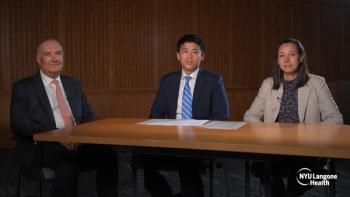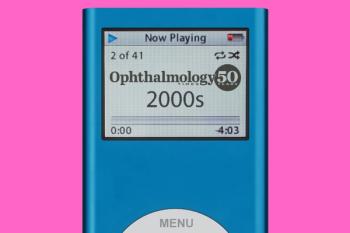
Patients unaware of diabetic retinopathy, diabetes link
Many individuals with diabetic retinopathy do not know that the disease affects vision. Furthermore, Hispanics are more likely to be unaware of the presence of this disease, indicated a nationally representative study.
Take-home
Many individuals with diabetic retinopathy do not know that the disease affects vision. Furthermore, Hispanics are more likely to be unaware of the presence of this disease, indicated a nationally representative study.
Dr. Varma
By Lynda Charters; Reviewed by Rohit Varma, MD, MPH
Chicago-Though diabetic retinopathy is the primary cause of new cases of blindness in working aged U.S. adults, many with the disease do not know that it affects vision.
This disturbing data was found in an analysis of the National Health and Nutrition Survey (NHANES) conducted between 2005 and 2008 by the National Center for Health Statistics Centers for Disease Control and Prevention.
In addition, Hispanic patients are more likely to be unaware of this association.
The survey also found that many patients with diabetic retinopathy did not undergo an annual dilated eye examination.
“Because diabetic retinopathy is progressive disease, early detection is critical to prevent visual loss,” said Rohit Varma, MD, MPH, professor and chairman, Illinois Eye and Ear Infirmary, UIC Department of Ophthalmology and Visual Sciences, University of Illinois at Chicago.
“The 2012 ADA guidelines recommend the patients with diabetes have a comprehensive eye examination, including pupil dilation, soon after diagnosis and at least annually thereafter,” he said.
Dr. Varma and his colleagues designed a study to determine the proportion of people with diabetic retinopathy who were unaware that diabetes had affected their eyes, the percentage reporting they had not had a dilated eye examination in the past year, and the factors that were associated with these outcomes.
The investigators used the NHANES 2005-2008 as the source of the data. The survey produces nationally representative estimates of the U.S. population and uses both self-reports and clinical examinations to assess the health and nutritional status of adults and children in the United States.
The study had two cohorts of patients: one included patients with self-reported diabetes, and the second included patients with diabetes and either mild non-proliferative retinopathy, moderate-to-severe non-proliferative retinopathy, or proliferative diabetic retinopathy (PDR) determined by standardized fundus photograph grading.
All patients were 40 years or old for whom fundus photographs were available and who completed sociodemographic, medical, and family information interviews.
Of the 286 participants with diabetic retinopathy, 70% (95% confidence interval [CI], 64–77%) were unaware that diabetes had affected their eyes, 62% (95% CI, 54–71%) reported not having been examined by a diabetes specialist during the previous year, and 33% (95% CI, 26–40%) reported not having undergone a dilated eye examination during the previous year, Dr. Varma noted.
The weighted frequency was 3,821,514 individuals, where the weighted frequency represents the estimated total number of adults in the U.S. population based on the 2000 Census data.
“After controlling for other factors, Hispanic patients were less likely to be aware of diabetic eye disease compared with non-Hispanic white patients (odds ratio [OR], 0.45, 95% CI: 0.20–0.99, p = 0.05). As expected, patients with a longer duration of diabetes, that is, 10 years or longer, were more likely to be aware of eye disease,” Dr. Varma said.
Compared with uninsured individuals, insured patients were more likely to have undergone a dilated eye examination during the past year (OR, 7.55, 95% CI: 3.30–17.27, p < 0.001) and visited a diabetes specialist during the past year (OR, 3.03, 95% CI: 1.62–5.67, p < 0.001), after controlling for other factors, he said.
The investigators drew the following conclusions from their data analyses.
“These nationally representative data suggested that many individuals with diabetic retinopathy are not aware that the disease has affected their eyes,” Dr. Varma said. “Hispanic patients were less likely to be aware of diabetic eye disease (compared with non-Hispanic white patients).
“Many of these diabetic retinopathy patients may not be complying with ADA guidelines to undergo an annual dilated eye examination,” he said. “Uninsured patients were less likely to have had a dilated eye examination or visit a diabetes specialist during the previous year compared with insured patients.”
Rohit Varma, MD, MPH
Dr. Varma did not indicate any proprietary interest related to the subject matter.
Newsletter
Don’t miss out—get Ophthalmology Times updates on the latest clinical advancements and expert interviews, straight to your inbox.






















































.png)


